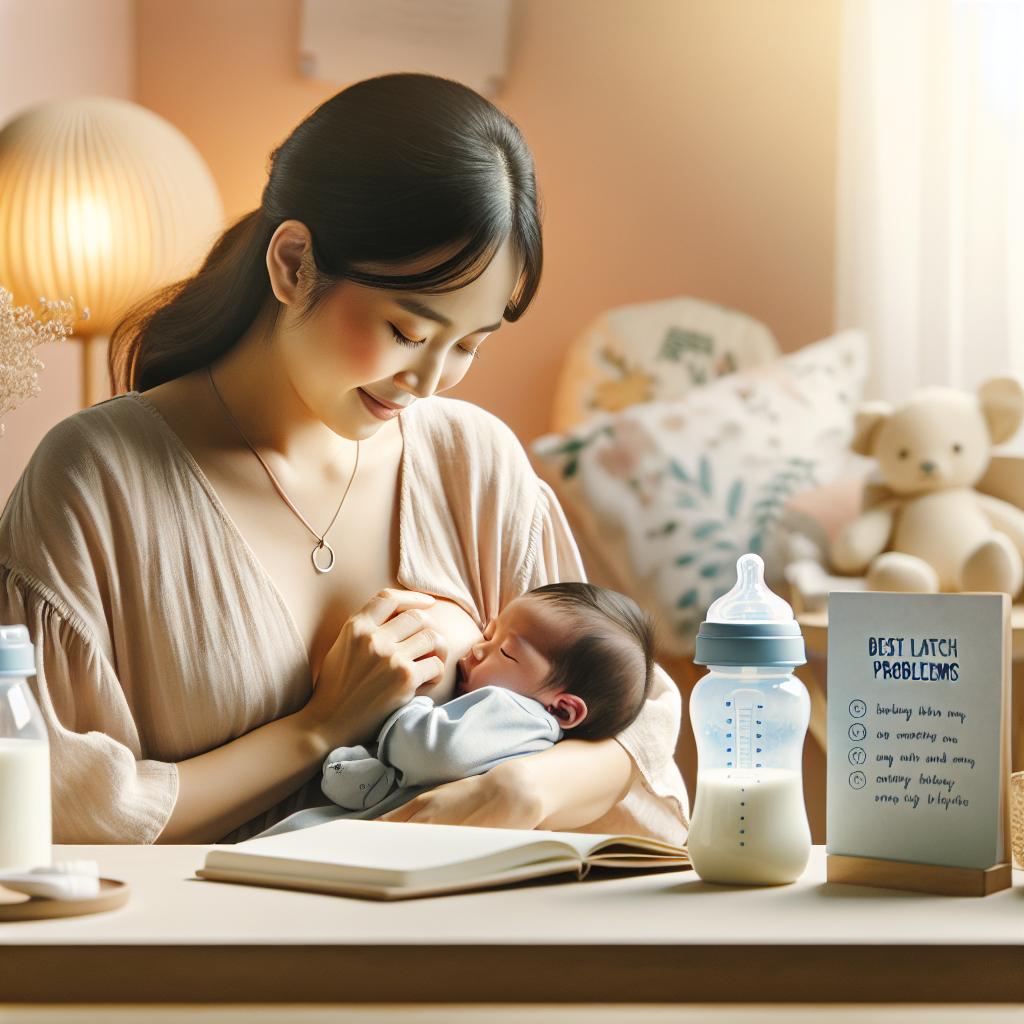Understanding the Challenge when a Baby Won’t Latch
The joy of motherhood can be occasionally punctuated with some infant feeding challenges. One such challenge is when a baby won’t latch onto the breast, presenting a hurdle in the breastfeeding process. This phenomenon, often known as ‘no latch,’ can cause stress and anxiety, as mothers strive to ensure their babies are getting the necessary nourishment. While some mothers may consider working to re-establish breastfeeding, for some families, it might be more appropriate to seek an alternative feeding method such as bottle feeding.
Resolving latch problems doesn’t have to mean an end to the bonding experience that feeding provides. If breastfeeding isn’t viable, it’s possible to bottle-feed your baby and still maintain that important mother-baby connection. The key is finding the right bottle.
Choosing the best bottle for a breastfed baby who won’t latch can feel daunting, but is an achievable undertaking. The trick is to find a bottle that mimics the natural shape, flow, and feel of a mother’s breast. This can make the transition smoother for your baby and reduce the risk of preference development for either feeding method. For guidance on how to choose the right bottle, you can refer to this helpful article.
Benefits of Bottle Feeding for Babies with No Latch
- Continued Nutrition: Regardless of latch problems, bottle feeding ensures your baby continues to receive essential nutrients. Breast milk or properly chosen formula can provide a balanced diet.
- Convenience: Bottle feeding can be more convenient, especially when out and about. It also allows other family members to help with feeding.
- Monitoring Intake: With bottle feeding, it’s easier to monitor how much your baby is consuming, which can be reassuring for any parent.
- Reduced Pain: If your baby is having trouble latching, it could cause discomfort or pain for the mother. Bottle feeding eliminates this issue.
Choosing the Best Bottle for Your Baby
Remember, it’s not just about picking any bottle, but the right bottle for your baby. Consider the following factors:
- Nipple Design: Choose a nipple that resembles the natural shape of the breast. This can help your baby switch between breast and bottle more easily.
- Flow Rate: The flow rate should resemble that of your own milk to make it easier for your baby to adjust and prevent choking.
- Material: Consider bottles made from safe, BPA-free materials.
- Size: The bottle’s size should be appropriate for your baby’s feeding needs. Larger bottles can overwhelm small babies.
Our mom-approved bottles compilation could help you identify suitable options. Sites such as Parents.com and What to Expect also provide valuable reviews and recommendations.
Encouraging Your Baby to Accept the Bottle
Teaching your baby to switch from the breast to the bottle can take a little bit of patience and a lot of love. Here are some suggestions that may assist in this transition:
- Try different bottle angles: Experiment with different feeding positions that can more closely resemble breastfeeding.
- Warm the nipple: A warm bottle nipple can replicate the warmth of a mother’s breast, making the bottle more appealing.
- Select an appropriate time: Choose a time when your baby isn’t overly hungry to introduce the bottle. A stressed and hungry baby is less likely to accept change.
- Let someone else feed your baby: If your baby smells you, they may expect breast milk directly. So, having a partner or family member introduce the bottle might be more effective. HealthPartners has an excellent guide on bottle refusal to better understand how to tackle these challenges.
Going Back and Forth between Breast and Bottle
With the help of a good quality bottle, it is possible for babies to transition back and forth between bottle-feeding and breastfeeding without undergoing nipple confusion. The key here is to choose a bottle that most accurately mimics human breastfeeding. It might take some trial and error, but once you’ve found a bottle that works, the infant will be able to feed without issues. To find the best baby bottles, you can refer to this article in the New York Times.
Why Some Breastfed Babies Refuse the Bottle
Not all breastfed babies happily accept a bottle. Sometimes, it could be due to a taste preference or because they miss the warmth and comfort of being close to their mother during feeding. Feed, Eat, Speak, an expert blog on infant feeding issues, discusses more about why some breastfed babies won’t take a bottle and provides strategies to overcome this problem.
Maintaining Bonding Time with Bottle Feeding
Good news! Bottle-feeding doesn’t mean you have to miss out on the much-liked bonding time. Be sure to maintain eye contact, hold your baby close, and use this opportunity to sing or talk to your child. Skin-to-skin contact can also still be incorporated into bottle feeding for the benefit of both baby and parent.
Remember to Consult a Breastfeeding Expert
Every baby is different, and so are their feeding patterns. If you are still facing issues getting your baby to take a bottle, it might be beneficial to seek guidance from a breastfeeding expert or lactation consultant. The International Lactation Consultant Association, for example, offers a multitude of resources for breastfeeding mothers. Remember, you’re not alone in this. There are numerous resources available to support you every step of the way.
Final Thoughts
There is no ‘one-size-fits-all’ solution when it comes to feeding babies. Whether you choose to exclusively breastfeed, exclusively bottle-feed, or mix both methods, remember that what works best for you and your baby is what matters the most. Above all, always ensure your baby is being fed, growing well, and feeling loved.

